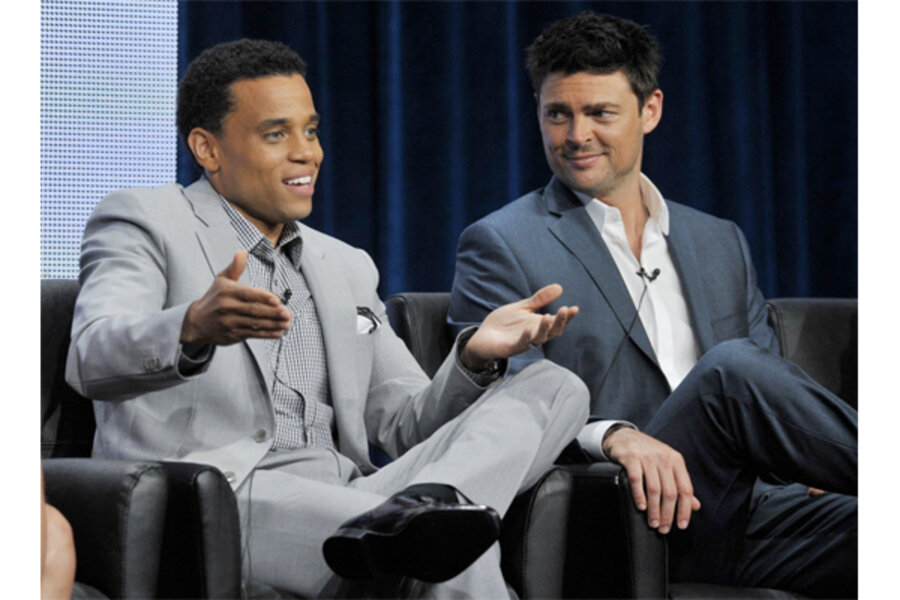'Almost Human' premiere review: The Fox show is entertaining and intriguing
Loading...
It’s taken a while for J.J. Abrams and J.H. Wyman’s Almost Human to make it to air, thanks to FOX’s post-season baseball obligations, but as the pilot arrives with the confidence and competence of a fully-formed product, the sci-fi buddy cop series side-steps a lot of the obvious growing pains that plague high-concept shows like this on their way out of the starting gate.
Starring Karl Urban (Dredd, Star Trek) and Michael Ealy (Think Like a Man), as a cop and his android partner in 2048, the show’s shorthand synopsis sounds like an I, Robot clone – Urban’s Detective John Kennex is as robot-weary and haunted by his past as Will Smith’s Del Spooner was – but the comparison fades as Dorian (Ealy) comes onto the screen to join with the occasionally wooden Urban, providing enough chemistry to power the show.
It’s heartening to see that, despite a slight breaking-in period, Detective Kennex and Dorian won’t have to spend a large chunk of this season establishing their relationship and dealing with Kennex’s distrust of “synthetics.” Surely, the pair will have their differences – at the end of the day, this show’s “hook” is that it’s about a cop and his android partner, fighting crime in the future – but letting Dorian prove himself to Kennex early on as an android that is programmed to rise above his programming allows Almost Human to put its best foot forward.
And why wouldn’t they get along? Both Kennex and Dorian have troubling reputations as they come into their forced partnership. For Kennex, he spent 17 months in a coma after an ambush that cost him his leg and his team, and he now returns to a force that is less than welcoming. For Dorian, his model was discontinued due to “bugs” and replaced by less humanesque and less independent models.
The partnership is set up by Captain Maldonado, a tough but sensible authority type who, due to the presence of talented actress Lili Taylor, will likely develop more dimension over time. In this episode, though, Maldonado and her team (which also includes Friday Night Lights alum Minka Kelly and Michael Irby, who plays disproving precinct tough guy named Detective Paul) have little time for exposition as the department fights off an attack from The Syndicate – a large gang that abducted another officer early in the episode, and who were behind the attack that killed Kennex’s team.
Kennex’s pre-occupation with The Syndicate (and the somewhat surprising betrayal that he endures at their hands) is evidenced by his quest to restore his memories from the attack with the help of a recolectionist and a dangerous procedure that allows him to peer into his own mind. Will they be the big-bad throughout the series?
Possibly, but the mention of people making it over “the wall” early on in the restricted zone (and other mysteries subtly introduced into the pilot) points to the potential for larger social commentary and depth in the show’s future. Almost Human is seemingly aspiring to be more than the entertaining and visually pleasing sci-fi procedural that it already is, and right now, it seems like it will meet those aspirations.
Jason Tabrys blogs at Screen Rant.







